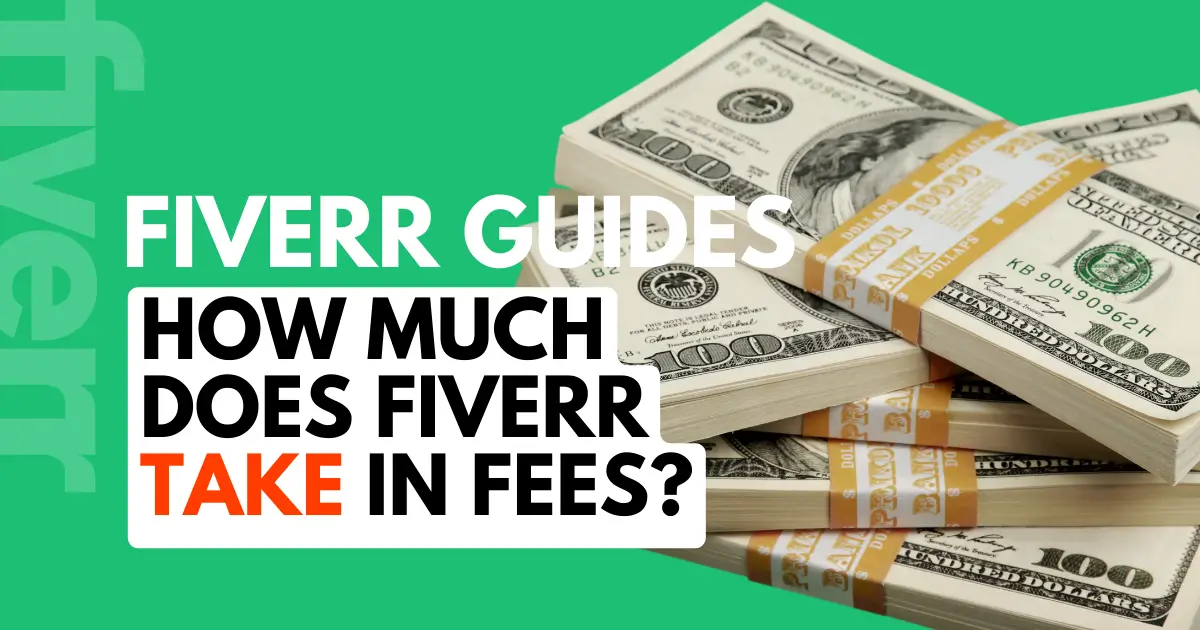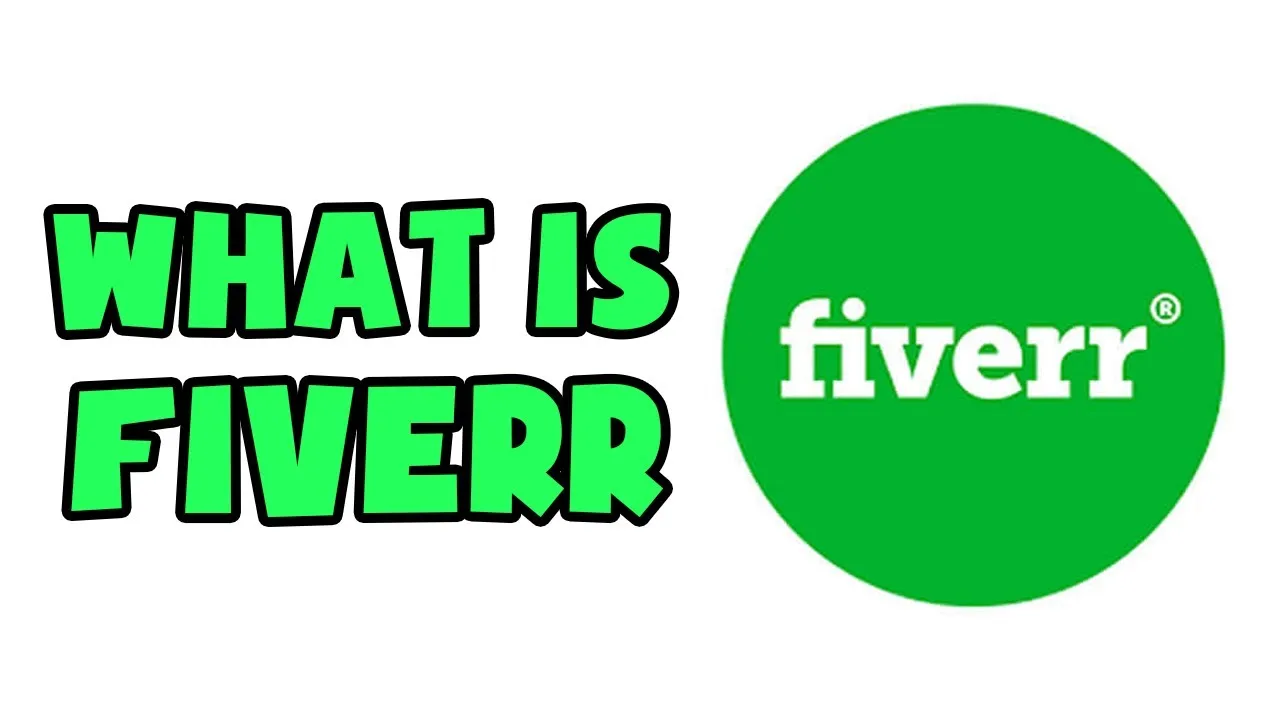If you've ever thought about diving into the world of freelancing, chances are you've stumbled upon Fiverr. It’s become a popular platform where people can buy or sell a multitude of services, ranging from graphic design and writing to voiceovers and digital marketing. But one question often looms over potential users: How much does Fiverr charge? In this post, we’ll break down Fiverr’s fees so you can make an informed decision about using the platform—whether you’re looking to hire someone or offer your skills.
What is Fiverr?

Fiverr is an online marketplace that connects freelancers with clients looking for various services. Founded in 2010, it has quickly grown into one of the leading platforms for freelance work. What sets Fiverr apart is its straightforward pricing model: services start at just $5—hence the name "Fiverr." However, the platform has evolved over the years, and now, the range of services available varies widely in price, depending on the complexity and quality of work.
On Fiverr, freelancers—often referred to as “sellers”—create profiles showcasing their skills, and they offer services known as “gigs.” Buyers can then browse through these gigs, looking for the right fit for their needs. Everything from writing, graphic design, programming, and video editing can be found at the click of a mouse.
Here are some key features of Fiverr:
- Diverse Service Offerings: You can find gigs in countless categories, including design, music, tech, and more.
- User Ratings and Reviews: Each seller has a rating based on client feedback, helping buyers make informed choices.
- Secure Payment System: Payments are processed through Fiverr, providing security for both buyers and sellers.
- Global Marketplace: Fiverr connects buyers and sellers from all around the world, promoting a diverse range of skills and perspectives.
Overall, Fiverr aims to simplify the freelancing experience, making it accessible for both new and seasoned freelancers to showcase their skills, while also providing clients with a variety of options to get their projects completed.
Also Read This: How to Get My First Sale on Fiverr
Fiverr Pricing Structure

When you step into the world of Fiverr, understanding the pricing structure is key to ensuring you're getting the best value for your services. Fiverr operates on a straightforward pricing system that not only benefits freelancers but also provides clients with clarity. Let's break it down:
- Service Tiers: Generally, freelancers create multiple service packages known as "Gigs." These Gigs can have different pricing tiers, which might vary based on the complexity and deliverables. For example:
- Basic Package: Usually represents the minimum service offered at a lower price.
- Standard Package: A mid-tier option with more features and benefits.
- Premium Package: The most comprehensive offering, often at a significantly higher price point.
- Fiverr's Commission: Fiverr takes a cut from the earnings of freelancers, which is typically set at 20%. This means that for every $100 a freelancer makes, Fiverr will retain $20.
- Pricing Flexibility: Freelancers have the liberty to price their services as they see fit. A good mix of affordable and premium options can attract a broader client base.
Understanding these elements helps you navigate the platform better, whether you're a freelancer or a client seeking services.
Also Read This: When Did PewDiePie Upload His Fiverr Video?
Additional Costs on Fiverr

While Fiverr's pricing structure is relatively transparent, there are some additional costs that both freelancers and clients should keep in mind. These fees help ensure smooth transactions and a reliable platform experience.
- Service Fees for Buyers: When purchasing a Gig, Fiverr typically adds a service fee that ranges between $2 to $5, based on the total cost of the Gig. This fee is applied at checkout and varies depending on the Gig amount—so it’s important to factor that into your budget.
- Currency Conversion Fees: If you’re a buyer using a currency different from the seller’s, be aware of potential conversion fees that your payment provider might charge.
- Withdrawal Fees for Sellers: Freelancers may incur withdrawal fees when transferring their earnings to their bank account or payment service (like PayPal). These fees can differ based on chosen withdrawal methods.
- Gig Extras: Many freelancers offer additional features or expedited delivery for an added fee. Clients should be aware that opting for these extras will increase the total cost.
By being aware of these additional costs, you can manage your budget more effectively while using Fiverr. Always double-check pricing details before making decisions, as transparency is vital for a successful experience on the platform!
Also Read This: How Much You Get Paid for Freelance Writing
4. How Fiverr's Fees Compare to Other Freelance Platforms
When diving into the world of freelance platforms, it’s crucial to understand how Fiverr's fee structure stacks up against its competitors. Different platforms have various ways of charging both freelancers and clients, which can significantly influence your choice of where to work or hire.
- Fiverr: Typically, Fiverr takes a commission of 20% from the total earnings of freelancers. This means if you sell a gig for $100, you end up with $80. There are no additional fees for listing gigs, making it straightforward for both buyers and sellers.
- Upwork: Unlike Fiverr, Upwork uses a sliding fee scale based on total lifetime billings with a client. For instance, you might pay 20% for the first $500, reducing to 10% for billings between $500 and $10,000, and finally to 5% for earnings over $10,000. This can make Upwork more cost-effective for long-term projects but potentially pricier for smaller, one-off tasks.
- Freelancer: Freelancer.com operates with a variety of charges, including a project fee that usually hovers around 10% for fixed-price projects. They also have fees for withdrawing funds, which can add to the overall cost of using the platform.
- Guru: Guru offers a tiered pricing structure, where freelancers can choose between a 9% fee for a basic membership or lower fees for higher-tier memberships. However, there’s also a minimal fee for each job proposal submitted, which can add up over time.
In comparison, Fiverr's flat 20% fee is simple and upfront, which many freelancers prefer for its transparency. Understanding these nuances helps you figure out where you’ll enjoy the best cash flow and overall value!
5. Conclusion: Assessing the Value of Fiverr's Charges
When you step back and look at Fiverr's fees, it's essential to weigh the costs against the benefits. Yes, the 20% commission can seem steep, especially for newcomers. But here are some compelling factors to consider:
- Access to a Global Market: Fiverr connects you with potential clients all over the world. This can lead to more projects compared to local service platforms.
- User-Friendly Interface: The platform is designed to be easy to navigate, making it simple to set up a profile, list services, and showcase your portfolio.
- Diverse Services: Fiverr offers services across numerous categories, from graphic design to digital marketing, allowing you to tap into various niches or pivot as the market demands.
- Built-in Marketing: Fiverr promotes your gigs through its platform, meaning you don’t need to spend extra on ads to get noticed. This can save you money in the long run!
In summary, while Fiverr's fees might initially appear high, they come with significant advantages that may justify the cost. Whether you’re a buyer or a seller, understanding these fees can help you make more informed decisions and maximize your potential returns.



